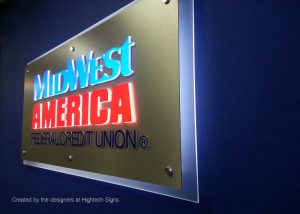
Lighting costs account for a larger percentage of the total energy used in the United States. 10% of most residential properties is lighting usage and up to 40% in commercial properties. Traditional lighting options, like incandescent and florescent bulbs, are inefficient and only convert a fraction of the energy they consume into light. LED lights, on the other hand, use much less energy than other lighting options and convert much more of the energy they use into light. It is no surprise that they have moved to the forefront of lighting efficiency. As LED technology has improved, the LED light options that are available have continued to expand. Today, LED lights can be purchased in a wide range of colors and for almost every type of fitting.
Design Benefits of LED Lights in Commercial Properties
Beyond energy savings, LED lights in commercial buildings adds to their design and function. CFLs have been used for energy efficient options for businesses in the past. However, they often limit the design needs of a space. LED lights can be aimed direction ally allowing light to illuminate specific areas without any wasted light.
Early attempts to adapt conventional lighting fittings to accommodate LED lights often produced unpleasant results. Many people were attracted to the promise of energy savings, but were disappointed with the results. However, with the advances in LED light technology, many consumers find there is little notable difference between the light output of LEDs and conventional lighting.
The future of LED lights in commercial properties
In spite of their slow start, LED lights are projected to be used to produce 50% of all lighting in homes and commercial buildings by 2020. Now that LEDs are accepted as the most energy efficient option, the focus in LED improvements is moving toward improving the aesthetic appeal of LED lights.
The cost of LED lights is expected to continue to decrease as they become more and more popular in homes and commercial buildings. In the meantime, LED lights still remain the best choice for meeting both the energy efficiency and design needs of a space.
